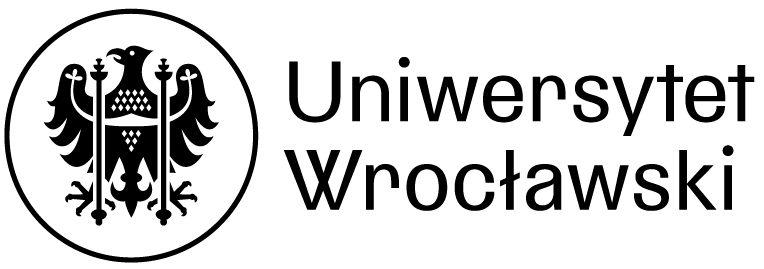
Library of the Archaeological Institute
News
In the Library, one computer workstation has been equipped with a camera, microphone, over-ear headphones, an A3 format scanner, and Speech2GO software along with the rehabilitative voice package “IVONA”.
About us
The library is located in the building at Szewska Street 48 in Wrocław, room 7 – entrance.
50-139 Wrocław
Tel. 71 375 2916
e-mail: biar@uwr.edu.pl
During the academic year 2024/2025, the Library of the Institute of Archaeology at the University of Wrocław is open as indicated below:
- Monday 9:00 – 15:00
- Tuesday 10:00 – 17:00
- Wednesday 10:00 – 17:00
- Thursday 10:00 – 17:00
- Friday – closed (internal work day)
Employees
- Małgorzata Płeska, MA, curator (manager)
- Natalia Sawicka, MA, curator
Our collections
The history of the collections of the current Institute Library dates back to 1945. The library specializes in collecting publications in the field of archeology in Poland and Europe and related fields such as anthropology, ethnology, history, art history, etc. The book collection contains the most important archaeological literature, including basic Polish and European periodicals.
Thanks to systematic replenishment of the collections through purchase, exchange and donations, the Library’s collection currently totals: 22 251 volumes, including books: 14 602 volumes, journals: 7 649 volumes, and 10 units inv. special collections (as of December 31, 2024).
Anyone interested in the book collection can use the reading room, and active students and doctoral students of the Institute of Archeology of the University of Wrocław as well as research workers of the Institute have the right to borrow it outside.
Catalogs
Library catalogs contain information about the collections located in the Library of the Institute of Archeology. Library catalogs are available in traditional and electronic forms.
Traditional catalogs contain information about the entire library collection.
Information about books published after 1991 is also available in the electronic catalog, maintained jointly with the University Library in Wrocław.
Catalog Entry
Books from the collection of the Library of the Institute of Archeology of the University of Wrocław published after 1991 can be found in the computer catalog of the University Library in Wrocław (call numbers starting with “Arch”, e.g. Arch 6921).
The reading room
The reading room of the Institute of Archeology Library is open in the academic year 2023/2024 during Library opening hours.
The subscription to journals of the Library of the Institute of Archaeology includes journals in electronic version:
1. Journal of Anthropological Research, wyd.: University of New Mexico, Albuquerque.
2. Journal of Field Archaeology, wyd. Boston University, Boston.
3. Medieval Archaeology: Journal of Society for Medieval Archaeology”, London.
Publishing exchange
In matters of publication exchange of the Institute of Archeology of the University of Wrocław, please contact Natalia Sawicka, M.A. at: wymiana.biar@uwr.edu.pl
Tel. 71 375 2916
Varia
Information useful for using the collections and electronic resources of the library of the Institute of Archaeology.
The alphabetical catalog provides complete information about all library materials, compact publications, i.e. books, manuscripts and electronic publications located in the Library of the Institute of Archeology of the University of Wrocław.
- The cards are arranged alphabetically according to author and title entries.
- In the Alphabetical Catalog, titles of serial publications (journals) are also provided in the form of links to the Journal Catalog.
- Catalog cards in the Alphabetical Catalog are arranged according to the Latin alphabet, supplemented with the letters j, k, w, without taking into account diacritical marks.
- Diacritical marks in Polish and other languages are reduced to basic letters (e.g. the letter o, the letter ó, ǒ, ȏ, ō, õ), e.g. Ōle → is found under Ole; Łęcki → we are looking for Lecki.
- The exception are diacritical marks in German, i.e. the so-called “umlauts” in the main card entry occur by adding the letter e to the base letter, e.g. ö is rendered by adding e (Möler → Moeler).
- In German, β should be found under ss.
- The entry in the alphabetical catalog is the name of the author (author’s entry) or specific words taken from the title of the cataloged work (title entry). Works by one, two or three authors are cataloged under the author’s entry. If there are more than three authors, the title word is chosen.
- If articles appear in an entry, they are omitted when sorting the cards in the alphabetical catalog, e.g. the archaeology → search under archaeology; das Haus → we are looking for Haus.
- The names of authors and titles of cataloged works written in non-Latin languages are transliterated into Latin.
- Call number – a sign of the place of a library object in the library’s collection. It is placed at the top of the catalog card – it contains the inventory number (Arabic numerals). Sometimes the call numbers are supplemented with additional stamps and pencil notes locating the location of library materials
- The Journal Catalog provides complete information about all serial publications, i.e., journals available in the Library of the Institute of Archaeology.
- The cards are arranged alphabetically according to title entries.
- Call numbers in the Magazine Catalog are supplemented with pencil notes indicating the place where a given magazine is stored.
Prepared by M. P.
List of numismatic prints
application/pdf
The file contains a list of numismatic overprints from the collections of the Library of the Institute of Archeology of the University of Wrocław, donated by prof. Borys Paszkiewicz. The copies can be used in the Reading Room of the Library of the Institute of Archeology.
